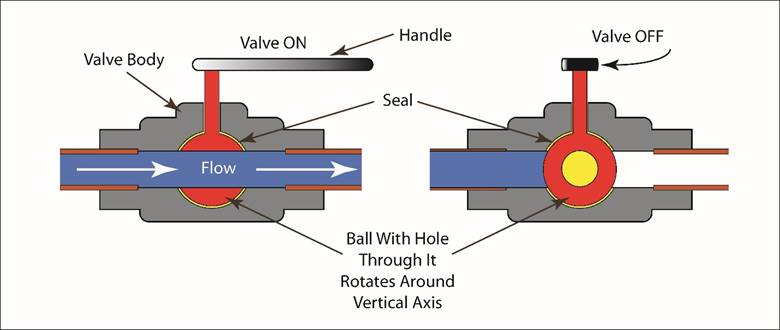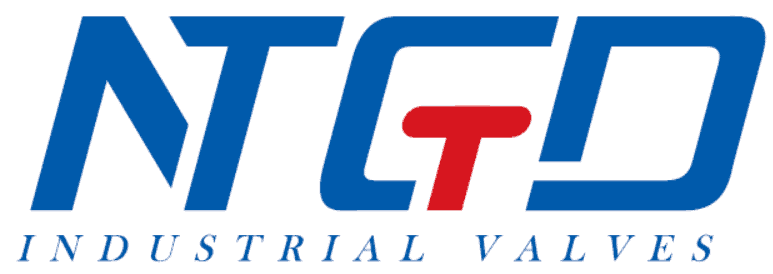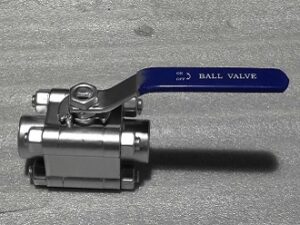Socket Weld Ball Valve
Socket Weld Ball Valve
※ Size Range: 1/2″-2″
※ Class Range: 150LB-2500LB
※ Fire Safe Design
※ Anti Static
※ Anti blow-out
※ Socket Weld Ball Valve Manufacturer
Introduction
Due to their versatility, affordability, and simplicity of maintenance, ball valves are widely used in both residential and commercial operations. For effective attachment to process pipes or equipment, several types of end connections are needed for different ball valve applications and installation situations. Some connection methods are more beneficial for particular purposes, even though they all fundamentally accomplish the same task—attaching the ball valve to the pipe or component at both ends.
In normal service, choosing a valve end connection is as easy as determining if the desired valve type is compatible with the chosen end connection type. However, all of the conditions associated in addition to a few other factors that are unique to particular applications must be taken into account when selecting for demanding services. This might involve taking into account
elements like abrasiveness, corrosion, toxicity, pollution, fire risk, human health risk, etc. Such restrictions may be necessary owing to particular operating conditions for a particular valve application, which would lead to a substantial increase in valve cost.
It is recommended to meet the pipe design standards as end connections on valves are often defined by the piping design professional. However, the valve engineer must tell the piping designer about the forces created in the piping as a result of the operation of the valve. The appropriate valve end connections can then be chosen in consideration of the level of gasket seal tightness and the strength necessary to sustain gasket sealing stress under all operating situations.
In order to eliminate the danger of leakage, valve connections can be welded into a pipe system. In high-temperature, high-pressure systems, such as those used in chemical processing, where there is no space for mistakes forced on by leakages, welded valve connections are generally employed. Since the valve must be desoldered in order to be taken out of the pipes, welded connection valves are typically regarded as a permanent installation.
In pipe systems where the end user must prevent any fluid or gas leakage issues at high pressure, welding is always preferred to connect tubes with valves. In the oil and gas sector, socket weld ball valve type connections are utilized for welding to tube ends with valves to reduce the danger of high pressure and the possibility of noxious gas leakage from the connections. In this post, we’ll study socket weld ball valves in more detail.
What is Socket Weld Ball Valve?
The Socket Weld Ball Valve, commonly known as the socket welded or SW Ball Valve is a high-quality & precisely constructed product. A socket weld ball valve is among the family of the welded ball valve.
Simply explained, it is a ball valve that has a socket whose inner diameter is a little bit bigger than the pipe’s outer diameter. As demonstrated, the pipe is placed into the socket and welded all the way around the rim. Smaller diameters, typically 2″ and lower, are normally allowed for socket weld connections. They are long-lasting and leak-free couplings produced by socket weld ball valve manufacturers. The “heat sink” fins in these valves aid to disperse heat and safeguard the seals during welding. Weld-in-place valves are commonly described as having this property.
While placing the pipe into the socket, leave a small space between the end of the pipe and the bottom of the socket. Because when heat from the welding process forces the pipes to expand against the socket, this space avoids severe stress failure from happening. To prevent the pipe from bottoming out into the socket, this space can be carefully checked and written on the pipe with a reference line, or a permanent fitment tool can be placed into the fitting. When the pipe is in its final position, the area where the pipe diameter touches the socket is filleted to secure it in place.
Socket weld ball valve connection features a simple tap end to the pipe since they are socketed. These are applied on steel valves and employed in pipelines for applications that deal with higher temperatures and/or pressures and do not require frequent disassembly. For an extended period of time, they guarantee leakproof connections.
Working Principle: Socket Weld Ball Valve.

A ball valve is made out of a rotational ball with an interior bore, as has been previously mentioned. The ball is linked to a stem, which is coupled to a lever. Turning the lever open and closing the valve in manually controlled valves, can also be done automatically with electric or pneumatic actuators. The holes must be positioned such that water may travel through them in the direction that the fluid is moving. The ball may be turned perpendicular to the flow route to stop it.
There can be two, three, or even four ports on a ball valve. The majority of ball valves have two openings and are actuated by hand using a lever. The lever is parallel to the pipe when it is in the open position. The lever’s perpendicular orientation to the pipe occurs when it is closed. Fast-flowing media and quick shutting valves might put manually controlled ball valves in danger of developing water hammers.
Construction: Socket Weld Ball Valve.
- Housing: Ball valves have no external parts; everything is housed inside the body or the housing of the valve. The ball valve’s internal parts are shielded by a strong, stiff metal, thermoplastic, or metal lined with a thermoplastic. It also gives access to the system that rotates the ball externally.
- Ball: An object is spherical with an opening at the centre. The bore is the term for the opening in its centre. When the cross-section of the fluid flow channel and the bore are planes, the bore acts as the fluid’s flow opening. A hollow or solid ball can be found in a ball valve. The consistent opening diameter of a solid ball throughout its construction allows fluid to flow easily and at a constant speed. In contrast, a hollow ball has a hollow interior structure, and the extra space inside it allows more fluid to travel through the valve.
- Shaft: The shaft links the rotating ball to the controlling device. Seals on the shaft, including packing rings and O-rings, keep the shaft and bonnet together and prevent fluid loss. The shaft can be moved manually using a lever or handwheel, or it can be moved automatically using an electric, pneumatic, or hydraulic actuation.
- Bonnet: The shaft and its packing are contained and protected by the bonnet, which is an extension of the valve housing. It can either be bolted or welded to the body. It also has a robust metal construction and fills the gap created when the shaft is connected to the external control mechanism.
- Seat: The ball and its body are sealed by the valve seats. The intake side of the valve is close to the upstream seat. On the other side of the upstream seat, which is located next to the valve’s discharge side, is the downstream seat.
Features & Benefits: Socket Weld Ball Valve.
- The socket weld ball valves are simpler in installation than the butt weld ball valves, but this weld joint can only withstand around half as much pressure.
- Furthermore, due to the socket welding, a specific gap is required to permit pipe insertion and thermal expansion, yet the gap’s presence will have negative effects.
- Since corrosive fluids tend to stay in gaps for extended periods of time, these discontinuous pipe internal parts are particularly prone to corrosion in such applications.
- The Socket Weld Ball Valve is produced in a cutting-edge facility in accordance with global production standards.
- We provide you the freedom to choose a socket welded ball valve based on your requirements and preferences.
- Reading the descriptions of each kind on our page attentively will help you choose the Ball Valve Socket Weld.
- When making products, the ASME and API international standards are followed, and before they are put on the market, rigorous testing is done.
- Depending on the customer’s needs, a range of diameters is available for socket weld ball valves. The Socket Welded Ball Valve’s ability to stop leaks and withstand high pressure is its key characteristic.
- The socket weld connections are responsible for the ball valve’s capacity to handle high pressures and avoid leaks.
- As specified by the Socket Welded Ball Valve manufacturer, it is also better suitable for steam-related applications due to its blow-out-proof steam design.
- The usual high-performance machined seat for socket welded ball valves is constructed of PTFE.
- For your preferred valve, we provide you the freedom to choose from a variety of choices, including padlocking, an anti-static mechanism, Pre-load Belleville washers for self-adjustable stuffing, V-ring packing, and an O-ring stem seal.
Application: Socket Weld Ball Valve.
- The valve’s primary function is to offer bubble-tight sealing in applications using pricey, hazardous, or combustible process material.
- A socket weld attachment is an excellent pick for high-pressure applications, but it only works well for pipes with nominal diameters of NPS 2 or less.
- Additionally, it is employed while dealing with steam under working pressures of 300 to 600 PSI.
- Although socket weld valves need specific machining during manufacturing, they are recognized for guarding against even the smallest leakage.
- Ball valves with socket welds are employed in HVAC systems for heating and cooling as well as in irrigation and water delivery systems. They are also utilized for the production of energy from power plants as well as in the admixtures and processing of chemicals.
Difference: Socket and Butt Weld Ball Valves.
- Considering the distinctions between the two kinds of weld, socket weld ball valves and butt weld ball valves are subject to separate standard requirements (ASME B16.11 for socket weld and ASME B16.9 for butt weld ball valves).
- Using socket welds, the pipe is inserted into a depression at the junction; no extra preparations, besides making sure the materials are clean, are required.
- For butt welds to work, the ball valves need to be the same thickness as the pipes. The ends of butt welded connections must also be bevelled.
- In addition to these functional variations, there are also structural variations, with butt weld ball valves often being stronger. Socket weld ball valves are often saved for pipelines with comparatively smaller diameters. Because of this strength disparity, butt welds are also favoured for applications involving high temperatures and pressures or in which the weld joint strength does not need to be greater than that of the base metal.
Summary: Socket Weld Ball Valve.
A socket weld ball valve is essentially a depression at each end of a valve where a pipe end goes. These welds are often used for small pipe sizes (NPS 2 or below). This sort of connection, as its name implies, is welded in place and is used in situations where the possibility of leaking needs to be kept to a minimum. In addition to being extremely cost-effective, this connection type may be utilized in place of NPT connections. The drawbacks of socket weld connections include the joint being permanent, which makes its dismantling difficult, and the possibility of early corrosion due to expansion gaps generated by the weld.
Socket weld ball valves, as stated in the article, are among the most extensively utilized in industrial applications. Although socket weld ball valve manufacturers can modify them for high-pressure applications, these valves are typically ideal for applications involving smaller pipes.
We value your time and hope you find the content beneficial if you are reading this.
Please feel free to contact us if you have any more questions regarding socket ball valves or other product inquiries. You are welcome to leave a remark and tell us what you think about our items.

